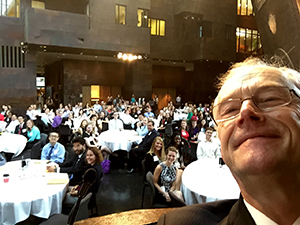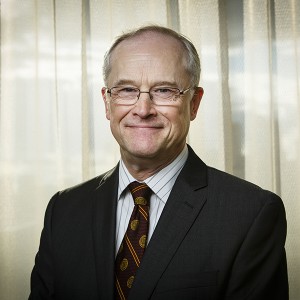
“I fell into public health, but it’s been the best possible fit for me,” says Dean John Finnegan, who celebrates 10 years as head of the School of Public Health on Nov. 11, 2015.
Finnegan began his career as a journalist, but quickly moved into graduate work at the School of Journalism & Mass Communication at the University of Minnesota. In 1979, while working on his PhD in mass communication, he was approached by its then-director F. Gerald Kline to work on a project at SPH. It was an assignment that would change the course of Finnegan’s life.
The project was a 13-year intervention program called the Minnesota Heart Health Program (MHHP), led by SPH’s Henry Blackburn, Russell Luepker, and Jerry Kline. Its goal was to educate whole communities about heart health through campaigns about everything from quitting smoking to increasing exercise and eating better. To educate populations, you need to spread the word. “We had the skills in recruiting and screening and intervening on personal risk factors,” says Blackburn. “But we had no experience in mass communication.”
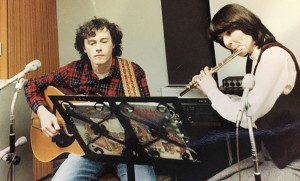
From the journalism school under Kline, Finnegan and a team of roughly 10 communications professionals, including writer Stacy Richardson, joined the project. “John was good at promotion and persuasion. And as an academic, he could infuse theory and research into our work, so we could carry out community health promotion at a higher level,” says Richardson. The communications group functioned as a full-service shop, creating everything from tabloid newspaper inserts to billboards, grade school learning tools, and promotional videos.
Finnegan and his colleagues joined with the communities of Mankato, Fargo-Moorhead, and Bloomington in developing and disseminating interventions and campaign messages. The project partnered with task forces of community leaders: schools, churches, employers, local media, and even grocery stores and restaurants. Connecting with communities is a skill Finnegan has put to good use as dean. “John has always been good at talking to people,” says Richardson.
While public health wasn’t always in Finnegan’s repertoire — his dissertation was on the development of defamation law in the 19th century — being involved in the MHHP throughout his PhD work sparked his passion for public health. “I thought I could make a career out of this,” he says. When he completed his PhD, Finnegan joined the faculty at SPH in the newly created Division of Epidemiology in 1986. It was a time when epidemiology was growing exponentially as social and behavioral scientists flooded into public health nationwide.
In the mid-1980s, health communication was a niche area of study with only a handful of scholars focusing on the field. “I saw the opportunity to do some good work in this area,” Finnegan says. “I retooled myself to work in the arena of health communication.”
Finnegan co-created the Mass Media and Public Health course with the journalism school, which is still taught today at SPH. He eventually led the Epidemiology PhD program and helped shape the Community Health Education (now Community Health Promotion) program.
Finnegan quickly rose through the ranks and by the late 1990s was tapped by then-SPH Dean Edith Leyasmeyer to be associate dean for education. Together, the two had a vision to expand the educational experience at the mostly research-focused school.
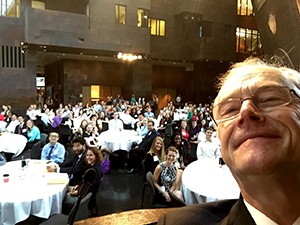
“We wanted to take advantage of the then-wave of interest in public health,” Finnegan says. “But you can’t sustain that wave if you don’t know where the market is going.” Planning with faculty and division leaders led to an explosion of academic programs and intense recruitment efforts. From 1998 to today, the student population has grown from 350 students to more than 1,200. “I really wanted a more balanced portfolio for the school,” says Finnegan. “For a very long time we had been one of the best rated schools for our research. I wanted the same for our education programs and the next generations of public health professionals and scientists.”
In 1999, the school made its first investment in online learning. “It was risky and controversial at the time, but it was a worthy investment,” he says. Since then, the school has launched executive programs that blend online and in-person learning and has some 100 online courses. “We have to meet our students wherever they are.”
In 2004, Finnegan became interim dean and threw his hat in the ring for the dean’s search, which garnered more than 60 candidates. The search came down to two and it was up to Frank Cerra, then-senior vice president for health sciences research, to make the decision. “I told Frank whichever one of us he chose, he made the right choice,” says Finnegan, who trained himself in leadership and governance throughout his time as associate dean.
Ultimately, Finnegan got the nod. “The faculty looked at me, and I was the devil they knew. I served as interim for 14 months and didn’t wreck the place,” Finnegan says with a laugh.
Once officially in the leadership position, Finnegan began working on hiring younger faculty. “My biggest concern was that the dominant age group of our faculty was 50-plus,” he says. “We had to begin hiring our successors.” Today, SPH has 50 percent more faculty than it had in 2004. “To attract students and produce research, you have to have the next generation of faculty leaders, and we continue to do that.”
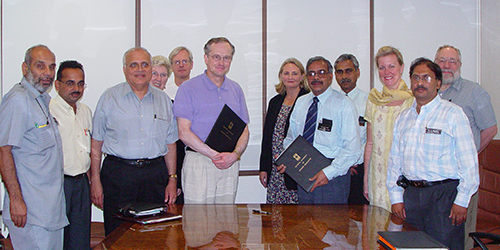
In his 10 years as dean, Finnegan can take credit for a number of the school’s directions: a focus on e-learning, an emphasis on global learning, and continuing partnerships among other schools of public health and the community.
“He was right in expanding our global interests and it’s impressive to see him represent us in the public health arena,” says Blackburn.
For Finnegan, the credit spreads throughout the school. “You have to surround yourself with the best people you can find,” he says. And give those people room to learn. “I strive to create an environment where faculty, staff, and students can do their absolute best and grow in the process,” Finnegan says.
“He has the same spirit he had as a graduate student. He’s humble, curious, and honest,” says Blackburn. To Finnegan, two virtues guide his work: forbearance and transparency. “You have to know when to be patient and have self-control, and you need to give people context,” he says. “And I always try to keep my eye on the larger goals and tend to be a macro-level thinker.”
Finnegan’s deep-rooted connection to Minnesota keeps him grounded. “He’s invested in our state and our people,” says Richardson.
“I am part of the fourth of six generations of my family in Minnesota,” Finnegan says. “Because of those roots, I am dedicated to this school and this university in a different way than perhaps some other deans and that’s been important to me.”
